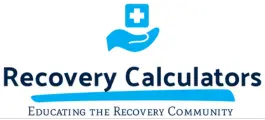Fentanyl is a powerful synthetic opioid that is many times stronger than morphine. It’s often prescribed for severe pain management, particularly for cancer patients. However, due to its potency, fentanyl is also associated with high overdose risks and has become a significant factor in the opioid crisis. Understanding the dangers of fentanyl and how to stay safe is crucial for anyone who may come into contact with this drug, either medically or illicitly.
The effects of fentanyl on the body can be severe and include respiratory depression, loss of consciousness, and even death. Recognizing these risks and knowing how to avoid exposure is essential for your safety.
Tools like the Clinical Opiate Withdrawal Scale (COWS) can be invaluable for those undergoing treatment for fentanyl addiction, helping medical professionals monitor withdrawal symptoms and provide appropriate care.
Let’s explore the various risks associated with fentanyl use, the physical and mental effects it has, and practical safety tips to avoid exposure. By understanding these aspects, you can take proactive steps to protect yourself and others from the dangers of fentanyl.
Questions answered in this article:
Our Alcohol Addiction Treatment Centers

Scottsdale Rehab
Luxury Personalized Rehab

HART Rehab
Holistic Luxury Personalized Rehab

Scottsdale Detox
Luxury Medical Detox
Understanding Fentanyl and Its Risks
Fentanyl is a synthetic opioid that is approximately 50 to 100 times more potent than morphine. It’s commonly prescribed for severe pain but has also made its way into the illegal drug market, often mixed with other substances. Understanding the risks associated with fentanyl is essential for keeping yourself and your loved ones safe.
One of the biggest risks of fentanyl is its high potential for overdose. Even a small amount can be lethal, especially when mixed with other drugs unknowingly. Because it is so potent, the margin for error is extremely slim. Fentanyl overdoses can lead to severe respiratory issues, loss of consciousness, and death if not treated immediately.
Another risk is its addictive nature. Fentanyl binds to opioid receptors in the brain, leading to extreme pain relief and euphoria. However, regular use can quickly lead to dependence and addiction. Unlike other opioids, fentanyl’s strength heightens these risks, making it much more dangerous.
Physical and Mental Effects of Fentanyl
The effects of fentanyl on the body and mind can be severe. Physically, fentanyl can cause drowsiness, dizziness, and extreme fatigue. More severe effects include slowed breathing, which can be fatal, and severe constipation. Loss of consciousness and extremely shallow breathing are signs of an overdose and require immediate medical attention.
Mentally, fentanyl use can lead to confusion, hallucinations, and erratic behavior. Users often experience a high that includes euphoria and a sense of well-being, but this quickly wears off, leading to a cycle of craving and dependence. Long-term use can result in mental health issues such as depression and anxiety, exacerbating the struggle with addiction.
Using tools like the Clinical Opiate Withdrawal Scale (COWS) and the Clinical Institute Withdrawal Assessment for Alcohol (CIWA) can help monitor the withdrawal process. These scales measure symptoms to provide the necessary medical interventions, ensuring a safer detoxification and withdrawal experience.
Understanding these physical and mental effects is crucial for recognizing the signs of fentanyl use and addiction. Early detection can lead to timely intervention, potentially saving lives by preventing long-term damage or fatal overdoses.
Safety Tips to Avoid Fentanyl Exposure
Staying safe from fentanyl exposure is essential, whether you are using prescription medications or trying to avoid illicit drugs. Here are some practical tips to keep in mind:
1. Properly Handle Prescriptions: Always follow your doctor’s instructions when taking prescribed fentanyl. Never take higher doses than prescribed and never mix with other substances without consulting your healthcare provider.
2. Be Aware of Slang Words: Knowing the street names for fentanyl can help you identify and avoid it. Some common slang terms include China White, Dance Fever, and Goodfella.
3. Educate Yourself on Sources: Be cautious of drugs bought off the street, as fentanyl is frequently mixed with heroin, cocaine, and other substances. This makes identifying pure products difficult and increases overdose risks.
4. Use Test Kits: If you suspect a substance might be laced with fentanyl, using a fentanyl test strip can help you detect its presence. This is especially important if you’re in an environment where illicit drugs are common.
5. Carry Naloxone: Naloxone is a medication that can reverse an opioid overdose. Keeping it on hand and knowing how to use it can save lives in emergency situations. Make sure that friends and family also know how to use it.
6. Stay Informed: Keeping up-to-date with current information on fentanyl and other drugs can help you stay aware of new risks and safety measures.
Getting Help and Treatment for Fentanyl Addiction
If you or someone you know is struggling with fentanyl addiction, seeking help is crucial. There are several treatment options designed to support recovery and ensure long-term health and well-being:
1. Detox Programs: Medical detox programs provide a safe environment to manage withdrawal symptoms. Using tools like the Clinical Opiate Withdrawal Scale (COWS) helps healthcare providers monitor and address symptoms effectively.
2. Therapy and Counseling: Individualized therapy, such as Cognitive Behavioral Therapy (CBT) and group counseling sessions, can help address the underlying issues of addiction. These therapies also teach coping skills that are essential for maintaining sobriety.
3. Medication-Assisted Treatment (MAT): MAT combines FDA-approved medications with counseling and behavioral therapies. This approach helps reduce cravings and withdrawal symptoms, aiding in the recovery process.
4. Luxury Rehabs: For those looking for a more comfortable and private environment, luxury rehabs offer high-quality care with additional amenities. These facilities often provide personalized treatment plans and a supportive atmosphere for recovery.
5. Local Resources: Depending on where you live, local rehab centers in cities like Scottsdale and Phoenix offer specialized programs tailored to individual needs. These centers provide comprehensive support from detox to aftercare.
6. Support Groups: Engaging with support groups such as Narcotics Anonymous (NA) can provide ongoing peer support. These groups offer a sense of community and shared experiences that are invaluable during recovery.
Fentanyl Dangers: What You Need to Know to Stay Safe
Understanding the risks and effects of fentanyl is vital for ensuring your safety and the safety of those around you. Being aware of how to avoid exposure and recognizing the signs of addiction can make a significant difference in preventing life-threatening situations. Seeking help through detox programs, therapy, and community support is a critical step towards recovery and long-term sobriety.
If you or someone you know is struggling with fentanyl addiction, taking immediate action can save lives. With the right resources and support, recovery is possible. Our calculators and educational tools at Recovery Calculators are designed to help you navigate the complexities of addiction and find your path to a healthier life.
Take control of your recovery journey today with the help of our sobriety calculator. Visit our website to explore the tools and resources we offer to support your path to sobriety.


